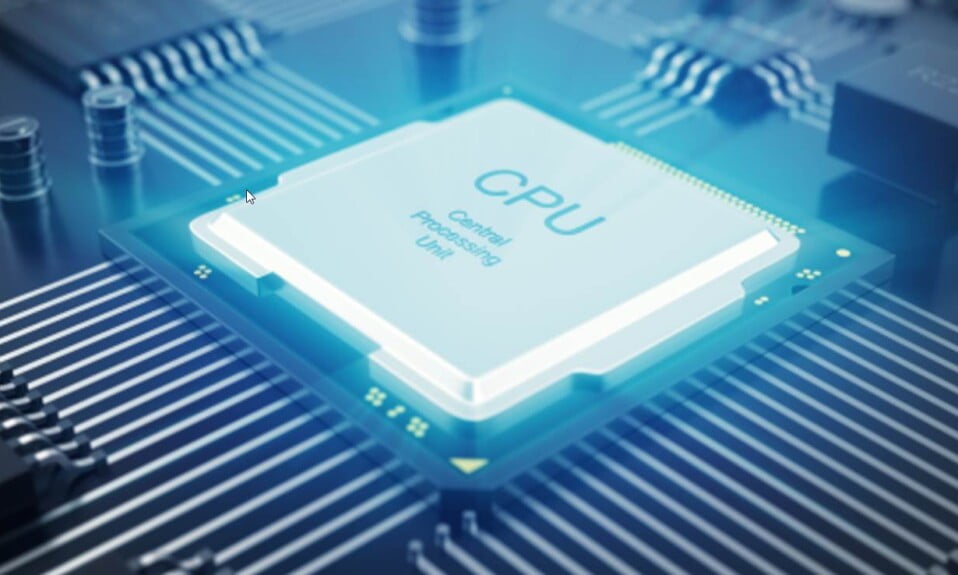Acronyms are the preferred method of the tech world for making fascinating technologies sound perplexing. When shopping for a new computer or laptop, check the specifications to see what kind of processor you may expect. Surprisingly, they almost never explain why this is so crucial.
When faced with these choices, it can be challenging to identify the difference between AMD and Intel, dual or quad-core, and i3 vs. i7. It could be pretty confusing for you to know which option is ideal for you, but we’re here to assist.
What Is A Central Processing Unit (CPU)?
The Core Processing Unit (CPU) is commonly referred to as the computer’s brain. It is one of the numerous processing units, although it is by far the most important. The CPU is responsible for performing calculations, operations, and program execution.
These functions were spread over multiple CPUs in previous machines. However, thanks to advancements in manufacturing and design, the entire CPU can now be housed on a single chip. This is also why CPUs are sometimes referred to as microprocessors.
Because of the lower proportions, we can now make all-in-one PCs and laptops that are thinner and lighter. These strong processors are also crucial to the performance of your smartphone.
What Are The Functions of a CPU?
Since the introduction of the first CPUs, there have been numerous advancements. Regardless, the CPU’s primary role has remained the same, consisting of three steps: fetch, decode, and execute.
1. Fetch
Fetching entails receiving instruction, as you might anticipate. The instruction is transmitted to the CPU from the RAM in the form of a series of numbers.
Because each instruction is only a tiny part of any operation, the CPU must be able to predict which instruction will be compiled further.
A program counter maintains a record of the current instruction address (PC). After then, the computer and instructions are stored in an Instruction Register (IR). The PC length is then increased to refer to the address of the next instruction.
2. Decode
The CPU passes an instruction to an instruction decoder circuit once it has been fetched and stored in the IR. This turns the instruction into signals that can be transmitted to other CPU sections for processing.
3. Execute
The decoded instructions are then transferred to the relevant portions of the CPU to be finished in the last stage.
The results are frequently written to a CPU register, where later instructions can reference them. Consider it to be similar to the calculator’s memory function.
What Are Multi-Core CPUs and How Do They Work?
Because early computers only had one processor core, the CPU could only process one set of instructions at a time. This is why early computers were slow, and data processing took a long time.
Manufacturers pushed single-core CPUs to their limitations over time, prompting them to explore new ways to expand the processor’s capabilities. This is why we now have multi-core CPUs, with terms like dual-core, quad-core, and octa-core often appearing in PC advertising.
They aren’t, however, as complicated as they appear. A dual-core processor, for example, is actually two distinct CPUs on a single chip. Rather than completely rebuilding the CPU, the businesses improved the manufacturing process to boost performance.
Recently, processor designers discovered a technique to boost performance further by making a single-core CPU act like two cores. Hyper-threading is a feature found in the majority of Intel Core processors.
Getting to Know CPU Specifications
Understanding how a CPU works are essential, especially when combined with knowledge of the most popular brands and models. There are, however, a plethora of alternatives with identical high-level specs.
You can use some additional, more precise characteristics to help you compare models more effectively. When it’s time to get a new, modern processor for your computer, these will help you choose between CPUs.
CPUs on Mobile Devices Vs. Desktop PCs
Computers were once enormous, static, desktop electrical devices that were always powered by mains energy. Laptops, smartphones, tablets, and smart home gadgets today feature CPUs that are more powerful than PCs from years ago.
The devices use specially developed mobile processors to achieve this shift to a more portable lifestyle. These CPUs have been designed for power consumption and efficiency to help you get the most out of your battery. Many manufacturers have termed their mobile and desktop processors the same thing, but with distinct range numbers and suffixes, which is inconvenient.
Mobile processors are often designated ‘U’ for ultra-low power, ‘HQ’ for high-performance graphics, and ‘HK’ for performance graphics and overclocking; however, there is no standard. Similarly, desktop CPUs have a ‘K’ for overclocking and a ‘T’ for power consumption optimization.
CPUs (32-bit vs. 64-bit)
Your processor does not get a steady stream of data. Instead, it receives data in words, which are smaller pieces of data. The number of bits in a word restricts the processor’s performance. Despite the fact that 32-bit processors were first created in the 1940s, they did not become widely used until much later.
They were economical enough to include in consumer electronics by the 1990s, and everyone felt 32 bits would be pretty future-proof.
However, as Moore’s Law predicted, technology progressed, and 32-bit processors became a limiting factor in both hardware and software. As a result, they’ve been phased out in favor of 64-bit CPUs, which are now the global norm.
Thermal Architecture of the CPU
The Thermal Power Design is a measurement of your CPU’s maximum power consumption in Watts. Lowering your power use is obviously helpful for your electricity bills, but it might also have an unexpected benefit: less heat.
Type of CPU Socket
The CPU must be connected to the other components via the motherboard to form a completely functional computer. When choosing a CPU, make sure the CPU and motherboard socket types are compatible.
Cache L2 & L3
The L2 and L3 caches are fast onboard memory used by the CPU during processing. The more you know, the faster your CPU will be.
Frequency
The frequency refers to the processor’s operating speed. Prior to multi-core processors, the most important performance parameter between individual CPUs was frequency.
Despite the inclusion of features, it remains a critical standard to consider. A high-speed dual-core CPU, for example, can outperform a slower quad-core CPU.
The Bottom Line
Your computer’s CPU is undoubtedly the most critical component. The CPU is responsible for all of the functions that are associated with computers, and the other parts primarily serve to support the CPU.
Despite adhering to the same guiding principles for decades, essential advancements have been made, such as the addition of many cores and the usage of hyper-threading.
They make our computers, laptops, tablets, cellphones, and other connected devices more powerful and valuable when used together. However, there are multiple changes you may apply to your present PC to assist in modernizing it and improving its performance.






